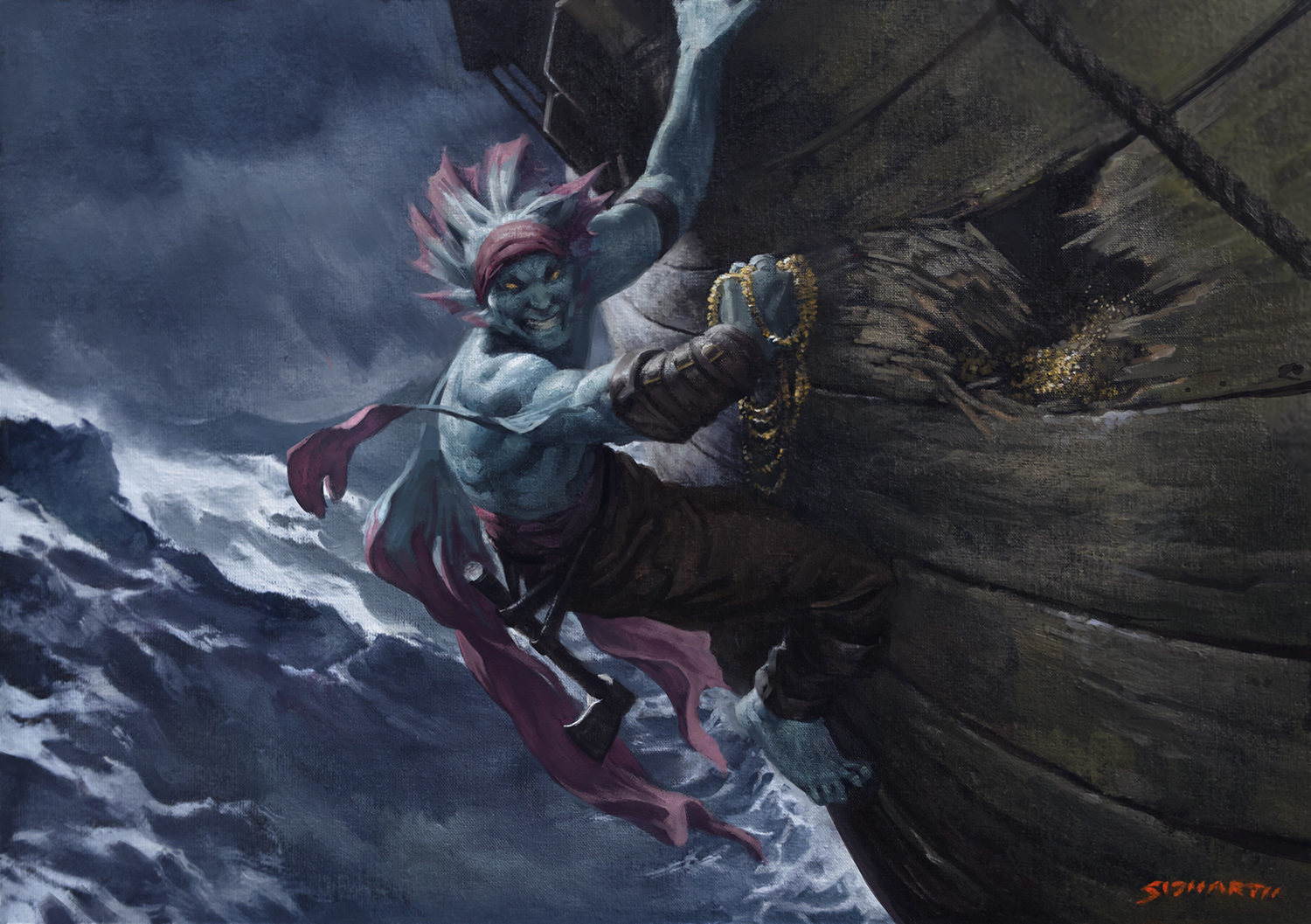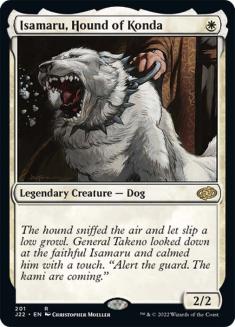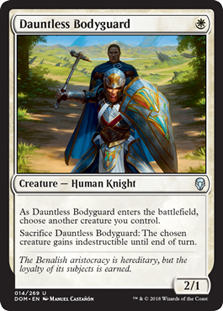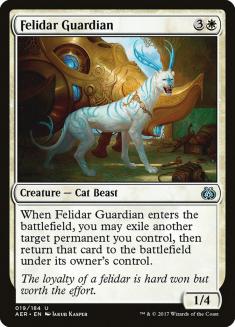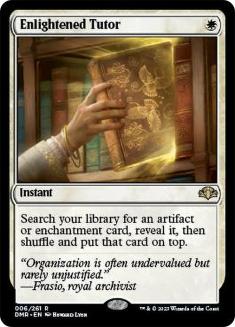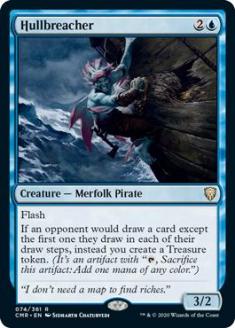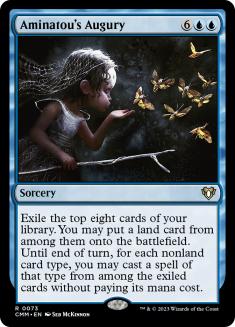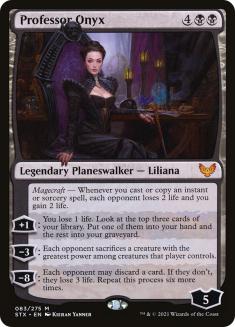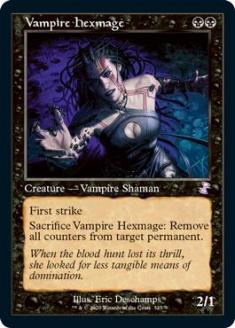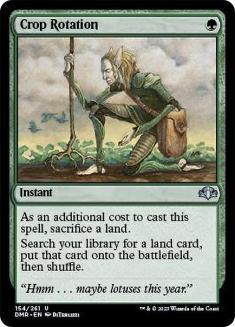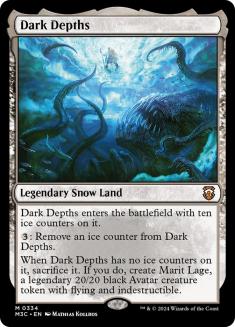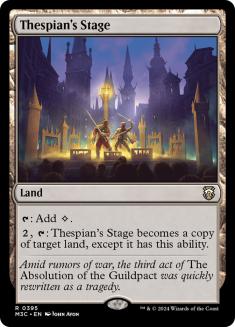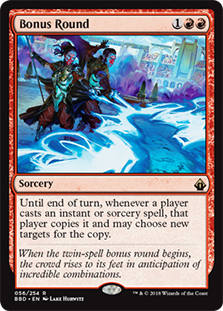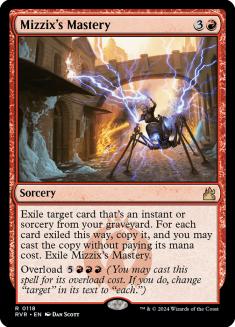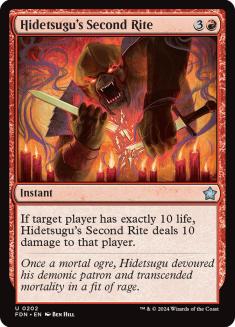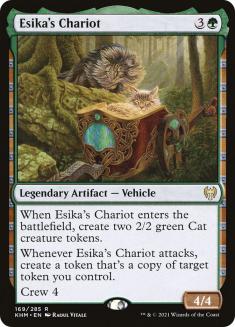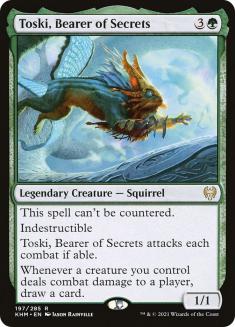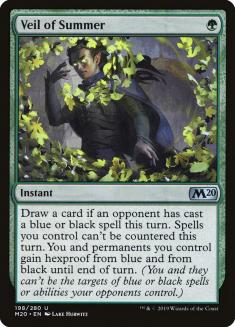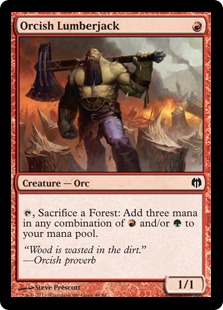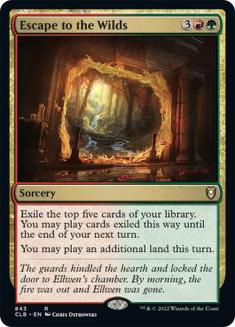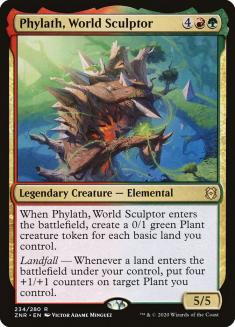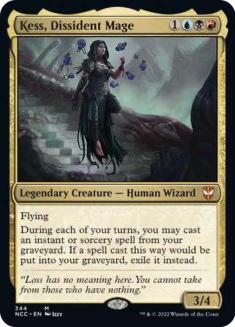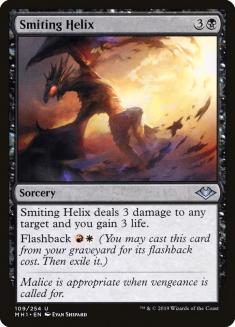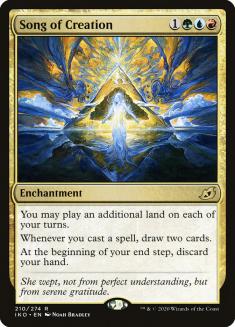Happy Wednesday, gamers. After another string of varying Magic Online (MTGO) Cubes, I awoke yesterday wondering when we would get news of future MTGO Cubes under the assumption that the news cycle would be consumed by Modern Horizons 2 for the coming weeks. As it turns out, the next Spotlight Cube launches today! As such, let’s talk about what makes the Alt-Vintage Cube tick.
For whatever reason the article pertaining to this Cube as designed by Gaby Spartz and Luis Scott-Vargas wasn’t live yesterday, so all I have to reference is the card list. Luckily, Alt-Vintage Cube is a spin on something that I’ve already played a ton of and have written about at length, so that’s more than enough! As per usual, I have ported the list over to Cube Cobra for easier analysis.
At a glance, you can see that this Cube unsurprisingly has a lot in common with the usual MTGO Vintage Cube. The loudest change is that the colors are more balanced by the numbers, so blue gets less representation in terms of total cards in the Cube. Don’t get any ideas about this meaning that blue isn’t the most powerful color, because that simply isn’t close to true, but this does mean that you’ll end up in nonblue decks more often.
The same general notes about drafting any Vintage Cube will hold true for Alt-Vintage Cube, and if you’re newer to drafting with power, then I’d recommend my breakdown of approaching these formats from last year as a starting point. The long and short of it is that you want to know what the most broken cards in the Cube are and you generally want to play as many of these cards as possible while making sure that your deck is otherwise coherent.
With all of that background in mind, let’s take a look at the Alt-Vintage Cube by color and see what’s different and how that impacts how you should approach drafting the Cube.
White
As you know by now, white is largely the same in literally every Cube. Alt-Vintage Cube features Ephemerate and Soulherder as support for a blink theme, though for the most part you don’t feel the impact of that sort of strategy much when the games are about Moxen and broken cards/combos. They’re strong, but are replacement-level in terms of general strategy. The most significant change to white as opposed to the regular Vintage Cube is the presence of two additional one-drops.
Mono-White Aggro is among the winningest decks in Vintage Cube, and all you really need to be successful with the deck is a solid mana curve. If you end up with a little power or your opponents stumble you can 3-0 pretty consistently with these decks, and more one-drops make them all the better.
The other significant white cards to take notice of are on the combo side of things. Felidar Guardian makes an appearance in the Cube alongside Saheeli Rai to create yet another Splinter Twin situation. Both cards are generally medium and the combo does require you to play three or more colors, but it’s good to be aware of all the same. Enlightened Tutor isn’t exactly a combo card but you’ll have more success with it if you treat it as one. Basically, if you’re using it to find a card that doesn’t have a good chance of winning the game on its own then you’re mostly just mulliganing. Think Opposition, Sneak Attack, and Recurring Nightmare-type cards.
In general, and as usual, Mono-White Aggro, Azorius Control, and “white cards for my Omnath, Locus of Creation deck” are the names of the game.
Blue
Blue is slightly different here than normal, but the most important note as always is that it’s just the most powerful color. It has the highest volume of generically powerful cards and they’re better than the next-best options by a wide margin. It’s very charming to see Crystal Shard in the Cube list as it’s an all-time great for non-powered Cubes, though much like Ephemerate it’s another cool thing that you can do sometimes that isn’t necessarily better than any busted blue cards pile.
I’m very happy to see both Alrund’s Epiphany and Sublime Epiphany in Alt-Vintage Cube, because frankly these cards have been problematically powerful in the other Cubes that they have shown up in. I like seeing it acknowledged that extra-turn effects and “punish your opponent for trying to play Magic” effects are at a Vintage Cube power level.
I like less that Hullbreacher is making another appearance in an MTGO Cube, but that part is out of my hands. It’s really odd to me to see Ashiok, Nightmare Weaver; Bribery; and Fractured Identity absent from the Cube, presumably for having unpleasant play patterns, but for Hullbreacher to skate by. I’m all for cutting these cards, but they missed a big one! Maybe it’s just something that we need to get out of our system. Don’t pass Hullbreacher. Don’t be surprised when you lose to it.
While I’m not at all about Hullbreacher, I am incredibly pleased to see Aminatou’s Augury making the cut. Aminatou’s Augury was in the MTGO run of Grixis Cube, and is an awesome inclusion for various combo decks. Using assorted pieces of fast mana and rituals to ramp to eight will often lead to awesome Storm turns and/or Emrakul, the Aeons Torn triggers.
Black
Another card absent from Alt-Vintage Cube presumably because the play patterns are unfun is Opposition Agent, which is among the better black cards in the regular Vintage Cube. It makes sense to me to remove these cards outside of the oversight of including Hullbreacher. Opposition Agent is probably the card that I’ve listed of this nature that I find most sympathetic, but when you steal an opposing fetchland with it, that’s pretty brutal. All that is to say you can forget about drafting “Clawposition” combo because there is no Opposition Agent to pair with your Wishclaw Talisman.
Outside of that we see some shifting of the tools for aggressive and controlling support, with the two major black archetypes being preserved as Reanimator and Storm. On that front, Alt-Vintage Cube will mark the debut of Professor Onyx in any MTGO Cube, and I expect it to be an awesome tool for dedicated Storm deck and more controlling decks alike. Six mana is a big ask, but the Professor is a card advantage engine stapled to a Tendrils of Agony-style win condition.
Another notable addition coming from Strixhaven is Sedgemoor Witch. I haven’t played it in a powered Cube yet, but the sum of the parts has proven formidable in unpowered Cubes, and it’s pretty close to Monastery Mentor, which is a solid Vintage Cube card. It has enough going on to either be near the top of your curve in an aggressive deck or a cheaper card to stabilize in a controlling shell, and I’d draft it pretty highly relative to most of the black cards in the Cube.
Another Splinter Twin situation has entered the chat. It can be fairly difficult to assemble the Marit Lage combo while drafting as well as in games, but it’s a cool thing to give a shot. I expect none of these cards to be valued highly and I also expect these decks to perform worse than decks intending to put Griselbrand on the battlefield, but this is the sort of combo that’s good to have in the back of your mind if you see these cards late in a pack, which you ought to.
The Reanimator strategy and assorted tutors are going to make for the biggest draws to black, and the usual rule of trying to play the best black cards without having to register any of the worst ones applies here.
Red
White gets more one-drops in Alt-Vintage Cube, but red does not. Red ultimately ends up looking like a combo and control color with some medium aggressive stuff that can come together from time to time. Setting aside my usual grievances about the curve for the red aggressive decks, there’s some sweet combo stuff present here that we don’t usually see.
Bonus Round never really landed in Grixis Cube given how weak it is to counterspells, but against green and white opponents, it should get some opportunities to shine as a Storm enabler. I believe that it’s generally more fun than good, but it’s a dream worth pursuing all the same. Mizzix’s Mastery is actually just awesome. Whether you’re using it with some kind of discard outlet to cast something like Aminatou’s Augury at a discount or going all the way off and copying a stacked graveyard, the card is well worth the price of admission.
If you’re interested in more of a challenge, Hidetsugu’s Second Rite is another “combo” option to explore. I don’t think it’s very good at all, but it strikes me as an incredibly fun Cube card to try to win with as often as possible. Watch out for the intervening if in the rules text though, as you’re likely to get hosed by the Cube’s inclusion of Talismans over Signets.
I assume that most of my red drafts of Alt-Vintage Cubes will be attempts at Storm given the cool new additions as well as the presence of the incredibly busted Underworld Breach that we don’t get in the usual Vintage Cube.
Green
Green is doing nothing different from the usual offering in spirit, but there are some changes to take note of. Neither Deranged Hermit nor the admittedly more powerful Deep Forest Hermit is present, which is a blow to the Gaea’s Cradle decks. This is somewhat minor, but I do find both of those cards to be considerably better for the green decks than Vivien, Monsters’ Advocate, so the choice jumps out to me.
A couple of Kaldheim bangers have made their way into the Cube, and while it would be ideal to curve Toski into a Hermit of some variety, it does at least play well with the mana creatures and assorted green creatures otherwise.
Esika’s Chariot has been awesome for green decks in lower-power environments and fits perfectly into Gaea’s Cradle / Craterhoof Behemoth shells. It’s just a lot of power to ramp out or cast on-curve.
This won’t come up too often, but there’s a pretty cool interaction with Saheeli Rai and Esika’s Chariot that I have on my Alt-Vintage Cube bingo card. The way it works is you crew the Chariot, -2 Saheeli to make a copy, keep the copy when prompting on the legend rule, attack with the copy and use the Chariot trigger to make a Chariot copy of the Saheeli copy, and then keep the Chariot copy to the legend rule. This will end with you having a copy of the Chariot that sticks around as well as several bonus Cats from the copies entering the battlefield. I also hope to cast an Esika’s Chariot off Mishra’s Workshop.
Abundant Harvest makes its MTGO Cube debut, and the card has completely outperformed all of my expectations for it in my Cubes. We used to joke about Oath of Nissa, but Abundant Harvest is more literally the green Ponder. It does a ton for the consistency of green decks and contributes to your ability to shave lands. Utopia Sprawl also gets its due in a powered Cube here, and while I won’t be conceding to it on Turn 1, it is a very high pick.
Veil of Summer is the last oddball that I’ll be touching on in green. I can’t imagine that it’s a very high pick, but it’s a sideboard card that I’m sure any green deck would be happy to have. The gameplay is pretty bad, as we all learned before the card suffered multiple bannings, but it does push back against blue, which is an admirable goal for powered Cubes.
Gold
I mentioned previously that Fractured Identity and Ashiok, Nightmare Weaver are absent in Alt-Vintage Cube, though Oko, Thief of Crowns has snuck in with its buddy Hullbreacher. I’m more forgiving of Oko than Hullbreacher, though once I saw that Identity and Ashiok were out, I had to double-check and kind of assumed Oko would be out as well.
Beyond that, we’re looking mostly at the usual suspects and nothing terrible out of the ordinary. I will say that the Gruul cards are actually a massive upgrade from the Huntmaster of the Fells and Bloodbraid Elf that we typically see in Vintage Cube. There are several cards that offer a lot to Gruul big mana decks which I find to be much better offerings than medium four-drops. Oricsh Lumberjack is also just a really messed-up piece of mana ramp that’s perfect for powered Cube.
There are a couple of three-color cards that we don’t usually see in Kess, Dissident Mage; Smiting Helix; and Song of Creation. I would rate them as a solid flagship card, a dumpy midrange card, and an awesome build-around that’s more likely to deck you than win the game card, in that order. Kess plus Time Warp is absurd, Smiting Helix is whatever, and I’m more than willing to lose to my own Song of Creation.
Artifacts
The artifact column in Alt-Vintage Cube is very close to that of the regular MTGO Vintage Cube, with the one major omission being Sensei’s Divining Top, which I find generally underrated, comboing effectively with Bolas’s Citadel. Outside of that, we see Talismans taking the place of Signets, which doesn’t impact where you should value those rocks in pick order at all. They’re both just great. Mostly this is a nice change in terms of the MTGO UI for Signets, which I’m sure we’ve all had to retap hundreds of times.
Lands
In addition to the Dark Depths combo lands being featured in Alt-Vintage Cube, we also see Triomes that we don’t normally in Vintage Cube. These lands are really powerful, so it just makes sense. Their presence will make drafting three- or more-color decks more viable, and will help me in my pursuit of getting a trophy with an Omnath Storm deck.
There are enough power-level outliers remaining in the Cube that I don’t believe this upgrade in mana fixing will change how I value lands in the Cube much, and I will still mostly be trying to find the most busted spells first and the lands to make them castable later. The major caveat is that blue lands are generally worth taking over replacement-level cards in other colors.
All in all, I don’t expect the Alt-Vintage Cube experience to be much different from the typical MTGO Vintage Cube offering. There’s a slight reduction on the most unfun cards, and a handful of cards that have the potential to make for some very cool stories show up as well, but for the most part the archetypes and the pick orders are largely the same.
As a Vintage Cube fan, I’ll certainly be giving the Alt-Vintage Cube a shot. If I’m lucky, it will be Hullbreacher’s last hurrah.

